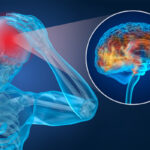By Ari Goldstein, Ph.D.
Educational Psychologist
Chicago Mind Solutions
You may have heard from some neurofeedback providers or enthusiastic patients that there are no side effects with neurofeedback. The truth is, there are some kind of side effects with almost ANY kind of medical treatment! After all, whether you’re taking an aspirin or using TENS to deal with pain, the whole point is to change the way your body functions. Any change, even a positive one, can elicit other changes as well that may or may not be anticipated.
In the case of Neurofeedback, physical changes are being made to the way your brain functions and that, in turn, can result in mood and emotional changes which may be felt during and after training. Although some people are aware of positive changes from their first neurofeedback session, very few experience side effects from the beginning. However, it is true that after a number of sessions, the cumulative effect of training can cause some side effects. If and when these occur, you should report what’s happening to your provider immediately.
As a general rule, some sort of side effect may be experienced by most patients within the course of the first ten sessions. Here are seven suggestions to help patients lessen the possible occurrence of negative effects from neurofeedback therapy.
1. Choose an Experienced Neurofeedback Provider
A seasoned neurofeedback therapist is more likely to recognize and know how to deal with side effects than one with less experience. Sometimes an inexperienced provider may assume patients are getting optimal training when, in fact, the therapy is actually making a problem worse instead of better.
Another thing to consider when choosing a neurofeedback provider is the quality of the equipment they will be using. All neurofeedback devices are not the same. Experienced practitioners know which type of equipment works most effectively on different brain conditions. They also know the safest frequencies to use for each type of training and each patient, as well as the regions of the brain that are safest to target. It is well worth the effort to check out your provider’s credentials, experience and equipment before you begin therapy since preventing side effects is easier than having to deal with them once neurofeedback has begun.
2. Insist on your provider doing a QEEG “brain map”
Before you begin your training, make sure that your provider does a complete QEEG (quantitative electroencephalograph). Your QEEG serves as a blueprint of the electrical activity in your brain. It enables a provider to diagnose any abnormalities in your brain activity and identify which areas to target for training. Without a QEEG to guide them, neurofeedback providers are basically just guessing at which areas of your brain should undergo training. This haphazard approach to the therapy not only reduces the effectiveness of training, it significantly increases the likelihood of adverse reactions and side effects.
3. Develop an Ongoing Dialogue with your Provider
Neurofeedback, like most treatments for brain conditions, works best when patients trust and are able to communicate well with their therapist. It’s important that patients share their reactions after therapy with their provider and feel free to ask questions about their concerns. It’s also a good idea for a patient to keep a written journal while undergoing therapy and record any reactions that occur after they’ve left the office.
Sometimes the practitioner will be able to assure you that any unpleasant side effects will lessen and go away shortly. But there may be times when side effects indicate that the provider should make changes in the therapy plan. Unless the patient and therapist are able to communicate with each other, needed corrections may not happen as quickly as they should.
4. Be careful not to over train your brain
Just as athletes can strain their bodies by exercising too much, Neurofeedback patients can sometimes become over trained and hurt themselves by undergoing sessions that are too long or too intense. Done correctly, neurofeedback may feel as if your working your brain but not to the point of producing negative side effects.
If patients are training several times a week for relatively long sessions, it might be a good idea to cut back on the frequency and length of the trainings. The ideal, as with any health care treatment, is to do the minimal amount of therapy to produce the maximum result.
5. Eat a healthy diet for your body and your brain
When ever you go into “training,” for an athletic performance, to recover from a sports injury or in the course of neurofeedback therapy, it is always a good idea to eat a healthy diet to support an increased level of activity. According to several recent research surveys, eating a diet that favors fresh vegetables, fruit and fish instead of over-processed foods is a good start. Ask your neurofeedback provider if they have any suggestions. Eating a diet that includes healthy fats, protein and whole grains is always a good idea for most people and should work to minimize side effects including fatigue.
6. Remember, side effects are usually temporary. So try to keep going.
If you do experience some side effects during or after your therapy, keep in mind that these reactions are almost always short-lived. Just consider, you’re trying to change the way your brain functions and has functioned for years. Resistance to these changes can cause some discomfort at first. In all likelihood the side effects will lessen as your brain learns to adapt and eventually they’ll subside altogether.
7. Stop Neurofeedback if the Side Effects persist
If the negative reactions you experience continue past a few sessions, stop the therapy. The fact is, it’s not supposed to be a painful experience and if it is, then something isn’t right.
About Chicago Mind Solutions
Based in Northbrook, Illinois, the licensed specialists at Chicago Mind Solutions work with children and adults to overcome symptoms and concerns related to dysfunctions in the brain with the help of neurofeedback therapy. A non-evasive approach to improving neuroplasticity, Chicago Mind Solutions is one of a select number of neurofeedback providers in the US offering its patients’ access to Brain Avatar by Brainmaster Technology. This advanced technology gives patients the opportunity to view in real-time the entire process of enhancing the brain’s neuroplasticity as a three-dimensional image. For more information about Chicago Mind Solutions, visit ChicagoMindSolutions.com






